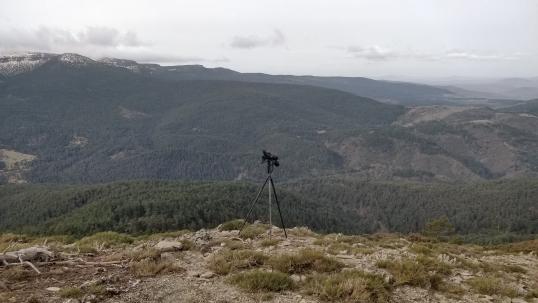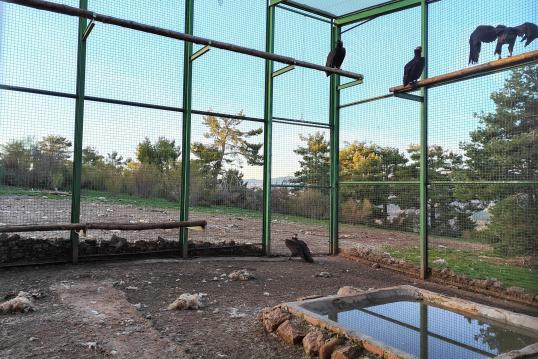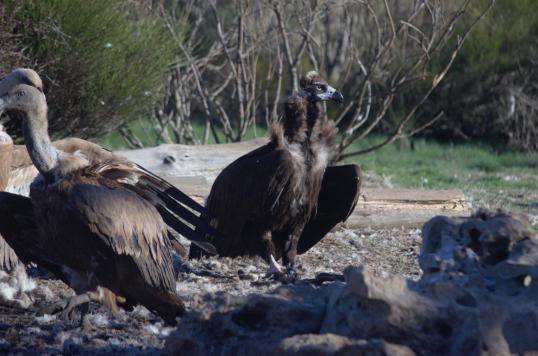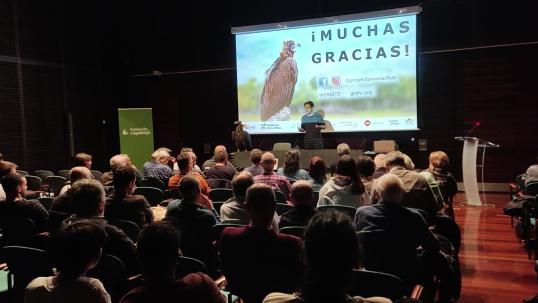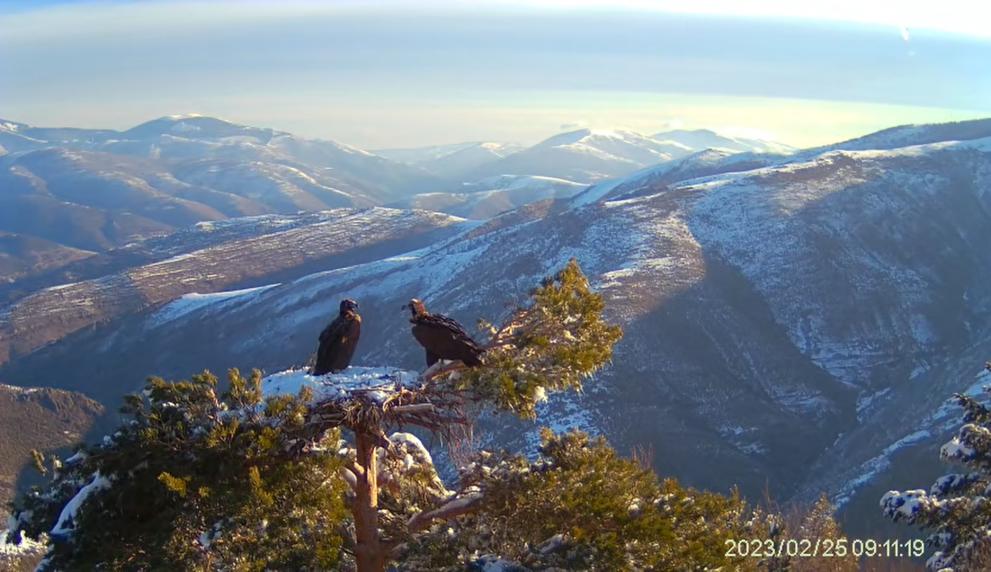
About the finalist
| Lead applicants | Grupo de Rehabilitación de la Fauna Autóctona y su Hábitat - GREFA |
| Category | Conservation on land |
| Countries involved | Spain |
| Main Natura 2000 sites | Sierra de la Demanda (Spain) |
| Website | https://grefa.org/ |
Overview
Europe hosts breeding populations of four species of vultures, which play an essential role in many ecosystems. Lack of food availability, habitat loss, direct persecution and poisoning meant that vultures disappeared from most of their European range, leaving smaller and increasingly isolated populations by the end of the 20th Century.
The species’ return and survival depend on the availability of suitable habitats for reintroduction, the establishment of safe corridors between colonies, as well as addressing continuing threats to their survival. As a result, gene flow will be increased and further risks of extinction reduced.
In 2007, Spanish NGO GREFA launched the Monachus Project to reintroduce cinereous vultures (Aegypius monachus) in Spain. As a result of the first experience in the Catalan Pyrenees, a cinereous vulture colony of 60 individuals was restored.
This application focuses on GREFA’s activities between 2017 and 2023 (the Monachus Project II), which aimed to establish a Cinereous Vulture (Aegypius monachus) population in the Natura 2000 ‘Sierra de la Demanda’ site in north-central Spain, an old distribution area where the species had become extinct and a suitable habitat for reintroduction.
Of the 102 cinereous vultures that were released, 95 are now established in the area. To ensure the success of the reintroduction, the initiative also targeted the threats that led to the species’ initial decline (illegal hunting, poisoned baits, electrocution by aerial cables), which is crucial for a successful and effective reintroduction project, and engaged critical key stakeholders, including competent local and regional authorities, livestock owners and hunters.
As a result of the cumulative actions of the Monachus Projects, it is also expected that different vulture populations are now able to connect to each other, using the first established colony in the Pyrenees as a “stepping stone” to other European colonies, specifically those in France.
The methodology implemented in Spain has followed a proven, assessed and validated procedure over the years, and its approach has recently been promoted in Bulgaria and Italy.
By also considering vulture populations in countries other than Spain, including those where the species were extinct, the experience of the Monachus Project aspires to contribute to the connection of all cinereous vultures across Europe, from west in the Iberian Peninsula to East Europe.
Pictures from the finalist
|
|
|
|
|
|
|
|
Details
- Publication date
- 14 March 2024
- Author
- Directorate-General for Environment

